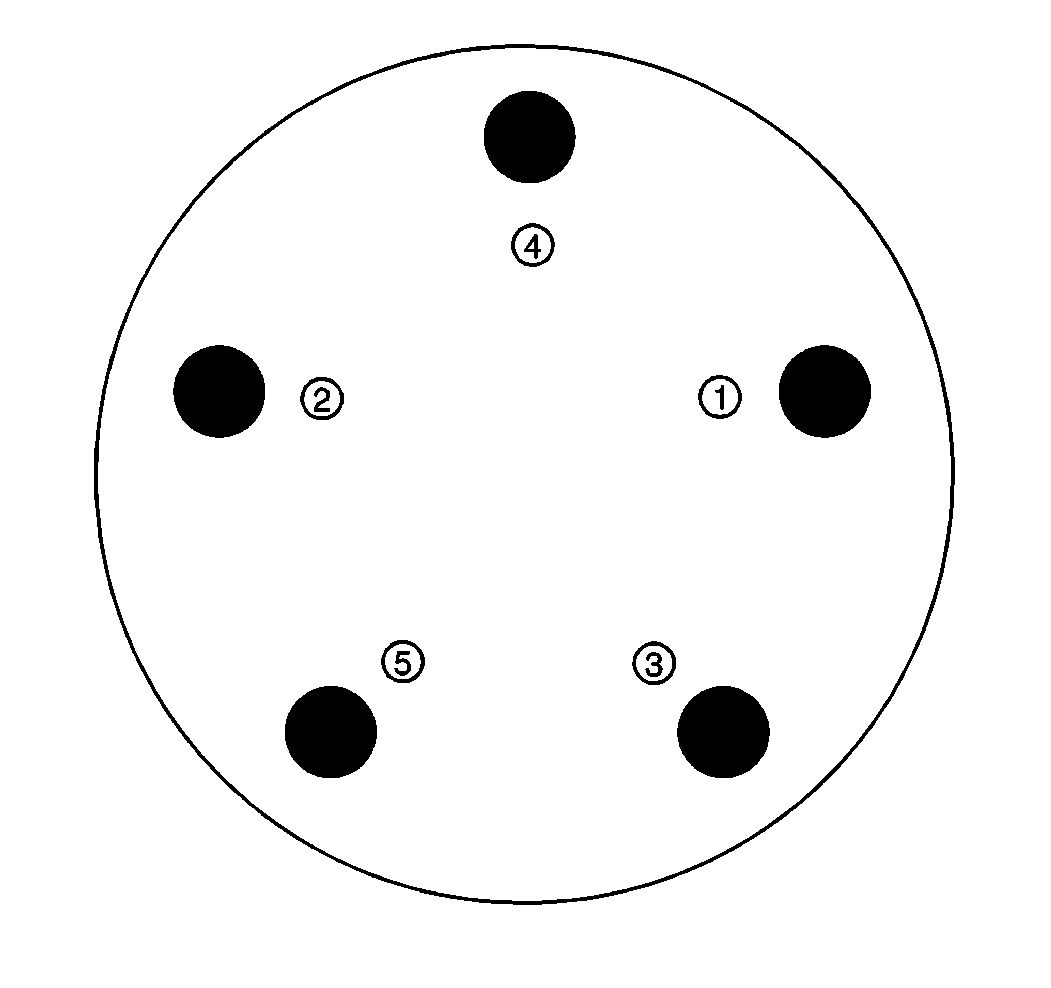Installation Procedure
- Install the wheel to the vehicle. Secure the wheel with wheel nuts.
- Lower the vehicle.
- Inspect the wheel alignment and the matching of tread wear. Adjust as necessary. Refer to Wheel Alignment Specifications in Wheel Alignment.

Notice: Before installing wheels, remove any build-up of corrosion on the wheel mounting surface by scraping and wire brushing. Installing wheels without good metal-to-metal contact at the mounting surfaces can cause wheel bolts or nuts to loosen, which can later allow a wheel bolt or nut to come off while the vehicle is moving. Wheel bolts or nuts must be tightened in sequence and to proper torque to avoid bending the wheel, brake drum or rotor.
Important: Wheel nuts must be tightened in sequence and to the proper torque in order to avoid bending the wheel, brake drum or rotor.
Notice: Use the correct fastener in the correct location. Replacement fasteners must be the correct part number for that application. Fasteners requiring replacement or fasteners requiring the use of thread locking compound or sealant are identified in the service procedure. Do not use paints, lubricants, or corrosion inhibitors on fasteners or fastener joint surfaces unless specified. These coatings affect fastener torque and joint clamping force and may damage the fastener. Use the correct tightening sequence and specifications when installing fasteners in order to avoid damage to parts and systems.
Tighten
Tighten the wheel nuts to 95 N·m (70 lb ft).
